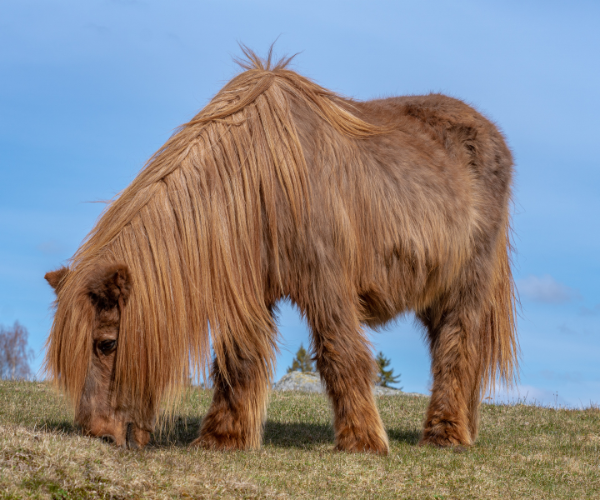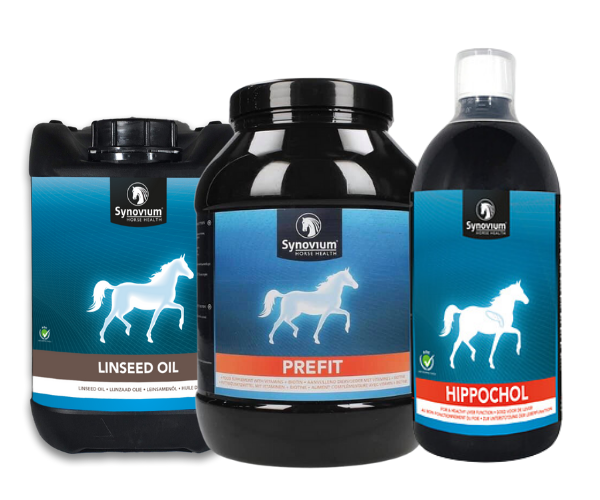Posted: 5th April 2023 | Back to news feed


The changes of the seasons affect the growth of the coat, which causes the horse to change coat twice a year. Before winter, when the days get shorter, the horse puts on a winter coat as an aid against the cold. When winter comes to an end and the days get longer, the winter coat sheds and is replaced by a summer coat.
The changing of the coat is therefore seasonal and is influenced by the length of the day and daylight. A healthy coat is therefore important for regulating the horse's body temperature and protecting the skin. The quality of the coat and the duration of the shedding depends on the condition and health of the horse but can also be influenced by nutrition.
Due to the changes of the seasons, the growth cycle of the coat is influenced, and the body adapts to the environment.
The growth cycle of the coat consists of four phases, the anagen phase, the catagen phase, the telogen phase and the exogenous phase. The anagen phase of the cycle is the phase in which hair grows and is the most active phase of the entire growth cycle.
During the catagen phase, hair growth stops so that old hair can fall out and make way for new hair growth. This is followed by the exogenous phase in which the hair falls out.
After the exogenous phase, there is a “resting” phase, or the telogen phase. During this phase, no growth or loss takes place, but the hair follicles prepare for the next anagen phase.
Daylight, mainly the change in the amount of daylight, is perceived through the eye of the horse. By sensing daylight, information is recorded about the changes of the seasons. This information is then “translated” into electrical signals that are sent to the suprachiasmatic nucleus (SCN) in the hypothalamus. The SCN is seen as the biological clock and regulates the body's biorhythms. The SCN influences the production of the hormone melatonin produced by the pineal gland. The production of melatonin suppresses the production of prolactin, a hormone with multiple functions in the body, one of which is to regulate the cycle of the hair follicles.
When the days get shorter and the amount of daylight decreases, the body is stimulated to produce a winter coat due to the increase in melatonin and a decrease in prolactin. The same is true when the days get longer during the transition to spring when the amount of daylight increases. Due to the decrease in melatonin and the increase in prolactin, the hair removal process is initiated. The growth cycle and the thickness of the winter coat not only depend on the difference in the amount of daylight, but also on the ambient temperature. Studies show that horses in a cooler environment produce a thicker winter coat and, due to a lower temperature, also start shedding later in the season.
The growth of a winter coat and shedding takes energy. In addition, the growth cycle of the coat requires the necessary proteins, vitamins, and minerals. It is therefore important that the diet meets the needs and that the horse is in optimal condition. If this is not met, the coat may look dull, or the horse has difficulty shedding. Monitoring coat quality therefore provides valuable information about the general health and well-being of the horse.
The addition of supplements can support the shedding process and the growth of a healthy coat, provided the horse has no underlying health problems that require attention first. Studies show that the addition of pure linseed oil, such as Synovium Linseed Oil, has a supportive effect on the horse's skin and coat. In addition, the fatty acids from linseed oil provide a long-lasting source of energy, which meets the increased energy needs during shedding and coat growth.
Research has shown that the concentration of vitamins and minerals in the coat hair changes seasonally. As mentioned earlier, diet and nutrients influence the quality of the coat hair. Therefore, the addition of a vitamin and mineral supplement, such as Synovium Prefit, can support good coat health.
A supplement to support the liver, such as Synovium Hippochol, can also support the horse during shedding by optimizing the functioning of the liver. The liver plays an important role in protein synthesis in the body. In addition, the liver is also an important organ for the absorption and storage of fat-soluble vitamins and minerals, which are important for the quality and growth of the coat.

For more information visit https://www.synovium.co.uk/
The Equestrian Index newsfeed is compiled from articles submitted by advertising members and expresses the opinions of those members. Watsons Directories Ltd shall not be held liable for any inaccuracies or mis-statements therein.